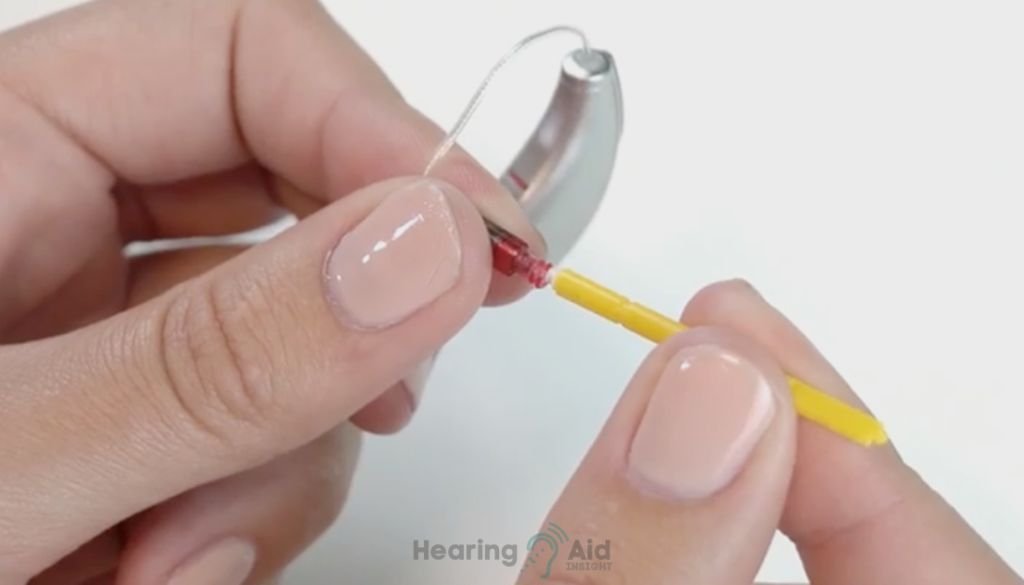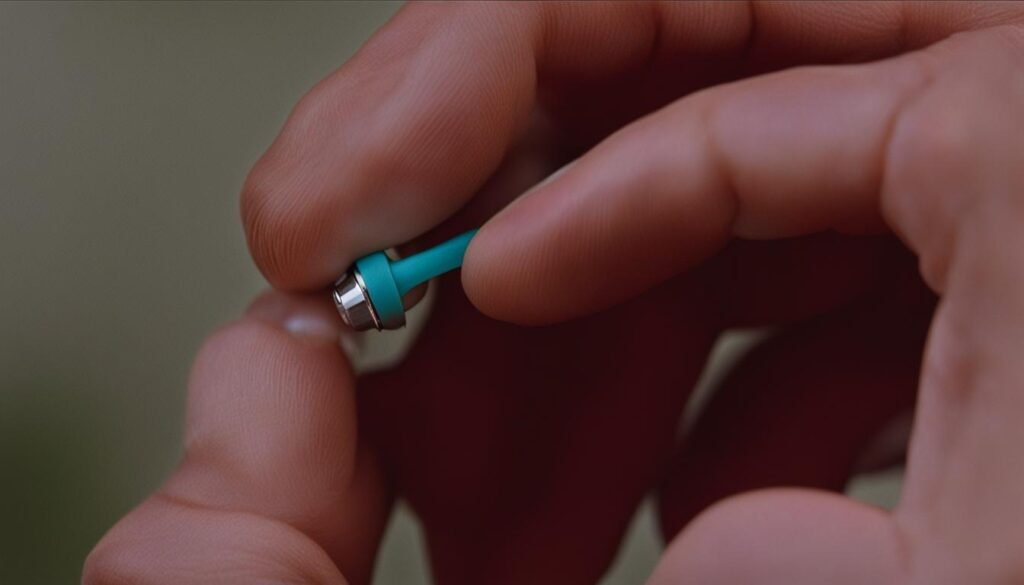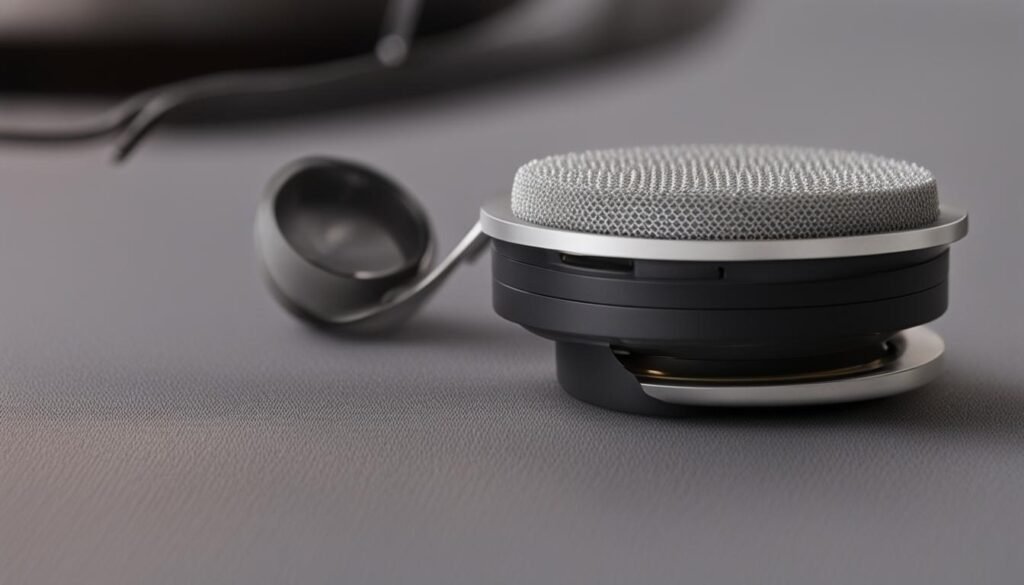Understanding how Often to Change Wax Guards on Hearing Aids is a fundamental aspect of their maintenance, crucial for ensuring optimal performance and sound quality. Wax guards, or wax filters, play a significant role in protecting your hearing aids from wax, debris, and moisture, which can impair the device’s functionality.

This guide will delve into the importance of timely wax guard replacement and focus on determining the right frequency for changes. While the general recommendation is to replace wax guards monthly, it’s essential to recognize that individual needs can vary based on personal wax production levels and how frequently you use your hearing aids. By tailoring the replacement schedule to your specific requirements, you can maintain the effectiveness of your hearing aids and enjoy consistent, high-quality sound.
Key Takeaways:
- Wax guards should generally be changed every month to maintain optimal performance.
- Individual needs may vary, so it’s essential to consider factors like wax production and usage patterns.
- Regular maintenance of hearing aids is essential for prolonging their lifespan and optimizing sound quality.
- Consult a hearing care professional for personalized guidance on proper care and maintenance.
- By following recommended maintenance practices, you can ensure a better hearing experience with your hearing aids.
How to Replace Tubing on Behind-the-Ear (BTE) Hearing Aids
Behind-the-ear (BTE) hearing aids have transparent or opaque tubing that connects the support to the custom-made earmold. This tubing plays a crucial role in maintaining good sound quality and ensuring comfort for the wearer. However, the tubing can become stiff, brittle, or clogged with wax and debris over time, negatively impacting the hearing aid’s performance.
To maintain optimum performance, it is recommended to have the tubing of BTE hearing aids replaced every four to six months. This can be done by a hearing care professional or learned to be done at home with the right tools and instructions. Replacing the tubing involves removing the old tubing, thoroughly cleaning the earmold, and attaching the new tubing securely. Following the manufacturer’s guidelines and using the appropriate tubing size and material for your specific hearing aid model is essential.
Regular replacement of BTE tubing is not only essential for maintaining the functionality of the hearing aid but also for the comfort and satisfaction of the wearer. Soft and pliable tubing ensures a proper fit and reduces the risk of discomfort or irritation. By following the recommended tubing replacement frequency and adequate care and maintenance practices, individuals can optimize the lifespan and performance of their BTE hearing aids, allowing for a better hearing experience.
Key Points:
- Behind-the-ear (BTE) hearing aids have tubing that connects them to the earmold.
- Tubing should be replaced every four to six months to maintain sound quality.
- Replacement can be done by a professional or at home with proper guidance and tools.
- Properly maintained tubing ensures the hearing aid’s comfort, functionality, and longevity.
When and How to Replace Domes on Receiver-in-Canal (RIC) Hearing Aids
Receiver-in-canal (RIC) hearing aids are popular due to their comfortable fit and excellent sound quality. A critical component of RIC hearing aids is the dome, the pre-sized earpiece in the ear canal. Regular maintenance and replacement of crowns are necessary to ensure optimal performance and comfort.
The frequency of dome replacement can vary depending on individual needs and your audiologist’s recommendations. Replacing domes every few months is recommended to maintain clear sound and a proper fit. However, it’s essential to consult with your hearing care professional for personalized guidance, as each individual’s needs may differ.

When replacing domes on RIC hearing aids, choosing the correct size and style is essential. Domes come in different shapes and sizes to accommodate various ear canal shapes and levels of hearing loss. Open-style domes have small holes to prevent the occlusion effect, while closed-style domes have no gaps to boost low-pitched sounds. Power domes are the most occlusive type, often used for significant hearing losses.
To replace the dome:
- Gently remove the old crown from the hearing aid receiver or thin tube.
- Align the new dome with the box and gently push it in until it is secure.
- Avoid using excessive force to prevent damage to the hearing aid. If you need help adequately replacing domes, consult your audiologist, who can provide guidance and demonstrate the correct technique.
Key Points:
- Receiver-in-canal (RIC) hearing aids use disposable domes that should be replaced every few months.
- Consult with your audiologist for personalized guidance on dome replacement frequency and style.
- Domes come in different shapes and sizes to accommodate various ear canal shapes and levels of hearing loss.
- To replace the dome, gently remove the old one and align the new crown with the tube, pushing it in until it is secure.
Importance and Replacement of Wax Filters in Hearing Aids
A crucial component of hearing aid maintenance is the regular replacement of wax filters, also known as wax guards or traps. These small plastic pieces play a vital role in preventing wax, debris, and moisture from entering the receiver and affecting the sound quality or functionality of the hearing aids.
Wax filters should generally be changed monthly to ensure optimal performance and sound clarity. This frequency may vary depending on individual wax production and usage patterns. It’s essential to pay attention to signs that indicate the need for a wax filter replacement, such as reduced volume or weak sound despite new batteries and visual inspection of blocked holes in the wax trap.
Changing wax filters is a simple process that can be done at home with proper guidance. Different hearing aid manufacturers provide specific instructions and tools for replacing wax filters, which can be demonstrated by an audiologist or found in the user manual. By following the recommended replacement frequency and using the appropriate techniques, individuals can maintain the effectiveness of their hearing aids and optimize their overall hearing experience.
Why are wax filters essential?
Wax filters are crucial in preventing wax and debris from clogging the hearing aid’s receiver, which can negatively impact the sound quality and functionality of the device. By filtering out these substances, wax guards help maintain clear sound transmission and minimize the need for repairs or professional cleaning.
How do you replace wax filters?
- Consult the user manual or contact the hearing aid manufacturer for specific instructions on replacing wax filters.
- Locate the wax filter on your hearing aid. It is typically a small, round, or rectangular piece located on the sound outlet of the device.
- Use the provided tool or a clean, dry cloth to remove the existing wax filter. Avoid using sharp or pointed objects that may damage the device.
- Insert a new wax filter into the designated area, ensuring it fits securely and covers the sound outlet completely.
- Follow any additional instructions provided by the manufacturer to finalize the replacement process.

Proper maintenance and regular replacement of wax filters are essential for maintaining the optimal performance, sound quality, and functionality of hearing aids. By incorporating this simple maintenance task into their routine, individuals can prolong the lifespan of their devices and enjoy a clear and immersive hearing experience.
Conclusion
Proper maintenance and regular replacement of components are crucial for prolonging the lifespan of your hearing aids and optimizing sound quality. By following these hearing aid maintenance tips, you can ensure that your devices continue to perform at their best:
Hearing Aid Maintenance Tips:
1. Clean your hearing aids regularly using a soft, dry cloth to remove wax, debris, and moisture that may accumulate on the surface.
2. Replace wax filters every month or as recommended by your audiologist. This helps prevent blockage and ensures clear sound transmission.
3. Replace tubing on behind-the-ear (BTE) hearing aids every four to six months to maintain optimum performance and comfort.
4. Replace domes on receiver-in-canal (RIC) hearing aids every few months to maintain a proper fit and clear sound quality.
By following these maintenance practices, you can prolong the lifespan of your hearing aids and optimize your listening experience. Remember to consult a hearing care professional for personalized guidance and instructions on proper device care. Take care of your hearing aids, and they will take care of you.
Frequently Asked Questions
How often should wax guards on hearing aids be changed?
Wax guards should generally be changed monthly to ensure optimal performance and sound quality of the hearing aids.
When and how should tubing on behind-the-ear (BTE) hearing aids be replaced?
The tubing on BTE hearing aids should be replaced every four to six months. This can be done by a hearing care professional or at home with proper tools and instructions.
How often should domes on receiver-in-canal (RIC) hearing aids be replaced?
Domes on RIC hearing aids should generally be replaced every 2-3 months. However, the specific frequency may vary based on individual needs and recommendations from an audiologist.
What is the importance of wax filters in hearing aids, and how often should they be replaced?
Wax filters, also known as wax guards or traps, play a crucial role in preventing wax, debris, and moisture from affecting the functionality and sound quality of hearing aids. On average, changing wax filters every month is recommended, though individual wax production may vary.
What are some tips for maintaining and optimizing the lifespan of hearing aids?
Regular maintenance, including replacing wax guards, tubing, and domes, is essential for optimal performance and longevity of hearing aids. To ensure proper care, it is recommended to consult with a hearing care professional for personalized guidance and instructions.



